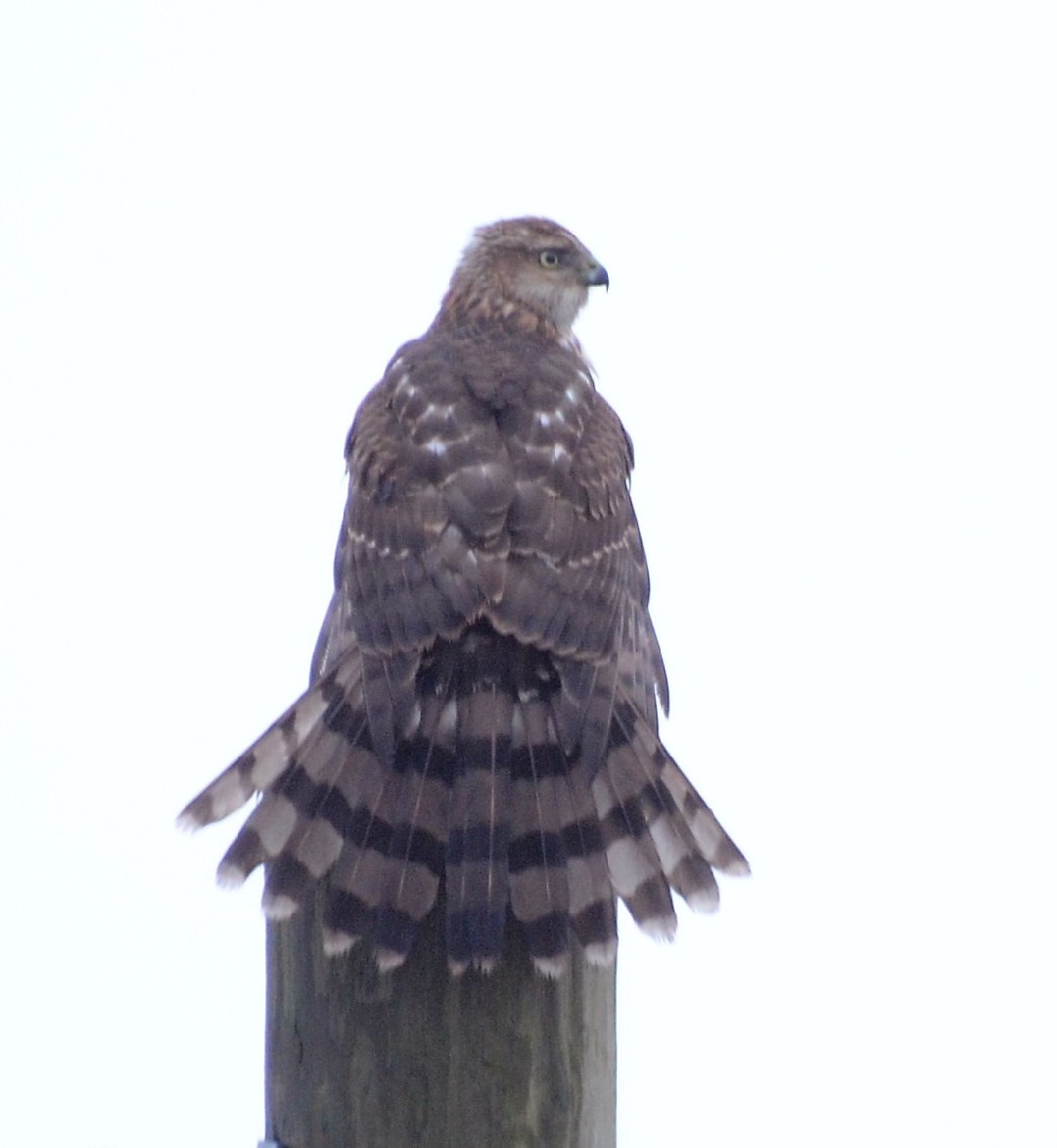Sharp-shinned Hawk
A species of Bird Hawks, Also known as Slate-colored Hawk, Bird Hawk Scientific name : Accipiter striatus Genus : Bird Hawks
Sharp-shinned Hawk, A species of Bird Hawks
Also known as:
Slate-colored Hawk, Bird Hawk
Botanical name: Accipiter striatus
Genus: Bird Hawks
Content
Description People often ask General Info
Description
The sharp-shinned Hawk may be a small hawk, but it is an impressive flier. It uses its long tail and short wings to perform acrobatics in the air as the raptor chases rodents and songbirds through the woods. The bird prefers building its nests in deep woods and is often visible in the fall as it migrates to warmer winter climates.
Size
25 - 36 cm
Colors
Black
Gray
White
Life Expectancy
13 years
Nest Placement
Tree
Clutch Size
3 - 8 eggs
Incubation Period
1 brood
Number of Broods
30 - 35 days
Nestling Period
21 - 28 days
Feeding Habits
Sharp-shinned Hawk mainly feed on small to medium-sized birds, particularly songbirds like warblers, sparrows, and thrushes. Sharp-shinned Hawk capture prey via surprise attacks from cover or by swift pursuit through vegetation, with males and females targeting different size ranges to avoid competition. While birds comprise most of their diet, sharp-shinned Hawk also consume rodents, large insects, and occasionally reptiles and amphibians. They are known to utilize backyard feeders to hunt.
Habitat
Sharp-shinned Hawk inhabits dense vegetation within forests and forest edges, favoring coniferous woods but also occupying oak, hickory, aspen, and various hardwoods. They thrive in temperate boreal forests from sea level up to 4,000 meters, typically preferring altitudes between 300–3,000 meters. In winter, sharp-shinned Hawk adapts to less dense forests and suburban regions, occasionally near bird feeders.
Nest Behavior
Pairs bring materials, but primarily the female builds the nest. Nesting occurs in concealed tree locations, with a wide, shallow nest accommodating eggs and young.
Nest Characteristics
The sharp-shinned Hawk's nest, typically located in coniferous trees under dense canopy, is a broad, flat platform made from dead twigs and bark flakes, measuring 1-2 feet in diameter and 4-6 inches deep.
Dite type
Avivorous
People often ask
General Info
Feeding Habits
Bird food type
Bird Feeder Type

Platform
Behavior
Sharp-shinned Hawk exhibit a dynamic range of behaviors that showcase their prowess as pursuit hunters. They are most active during the day, using stealth and agility to navigate through dense forests at remarkable speeds, leveraging their long tail as an effective rudder. Sharp-shinned Hawk utilize bursts of speed from concealed perches to ambush prey, which includes small birds, rodents, and insects. Their flight pattern is characterized by a few quick wingbeats followed by a glide. While migrating, sharp-shinned Hawk may form small groups but generally live as elusive, quiet pairs during breeding season, often nesting in secluded areas of deep forests. Post-fledging, adult sharp-shinned Hawk continue to feed their young, helping them hone their hunting skills.
Distribution Area
This species is widespread in North America, Central America, South America and the Greater Antilles. Below, the distributions of the four groups (see taxonomy) are described as they occur roughly from north to south: The nominate (A. s. striatus) group is widespread in North America, occurring in all of the forested part of USA and Canada, breeding in most of it. Populations in the northern part of the range migrate south and spend the non-breeding season (winter) in the southern USA, Mexico and Central America as far south as Panama, with a smaller number spending the winter in the Greater Antilles. Resident populations exist in temperate parts of the US, Canada (in a few coastal regions), Mexico (highlands from Sonora to Oaxaca), Cuba, Hispaniola and Puerto Rico. A. (s.) chionogaster (white-breasted hawk) occurs in highlands from far southern Mexico (Chiapas and Oaxaca), through Honduras, Guatemala and El Salvador, to Nicaragua. It is, as far as known, resident, but some local movements may occur. A. (s.) ventralis (plain-breasted hawk) occurs in the coastal mountains of northern Venezuela and Colombia, south through the Andes from western Venezuela, through Colombia, Ecuador and Peru, to central Bolivia. A disjunct population occurs in the Tepuis of southern Venezuela (likely to extend into adjacent parts of Roraima in far northern Brazil, but this remains unconfirmed). It is, as far as known, resident, but some local movements may occur. A. (s.) erythronemius (rufous-thighed hawk) is widespread in eastern South America in eastern and southern Brazil, Uruguay, Paraguay, north-eastern Argentina and south-eastern Bolivia. It is, as far as known, resident in some regions and migratory in others. The movements are generally poorly understood, but it only occurs seasonally at some localities in Argentina. 
Species Status
In North America this species declined in numbers in the 1960s and 1970s, probably as a result of the use of DDT and other pesticides. The population of USA and Canada has rebounded since and might even exceed historical numbers today, probably due to the combination of the ban on DDT and the proliferation of backyard bird feeders in North America which create unnaturally reliable and easy prey sources. Migratory sharp-shinned hawks are one of the most numerous raptors recorded at "hawk watches" across the country. An exception is the subspecies from Puerto Rico, Accipiter striatus venator, which is rare and listed as endangered by the U.S. Fish & Wildlife Service. The remaining resident subspecies from the Greater Antilles, fringilliodes from Cuba and nominate (A. s. striatus) from Hispaniola, are uncommon, local, and, at least in the case of the latter, decreasing. Both ventralis (plain-breasted hawk) and erythronemius (rufous-thighed hawk) are fairly common (but easily overlooked due to their secretive behavior) and presently considered safe. The situation for chionogaster (white-breasted hawk) is potentially more problematic due to its limited range, although it, at least locally, remains fairly common. 
